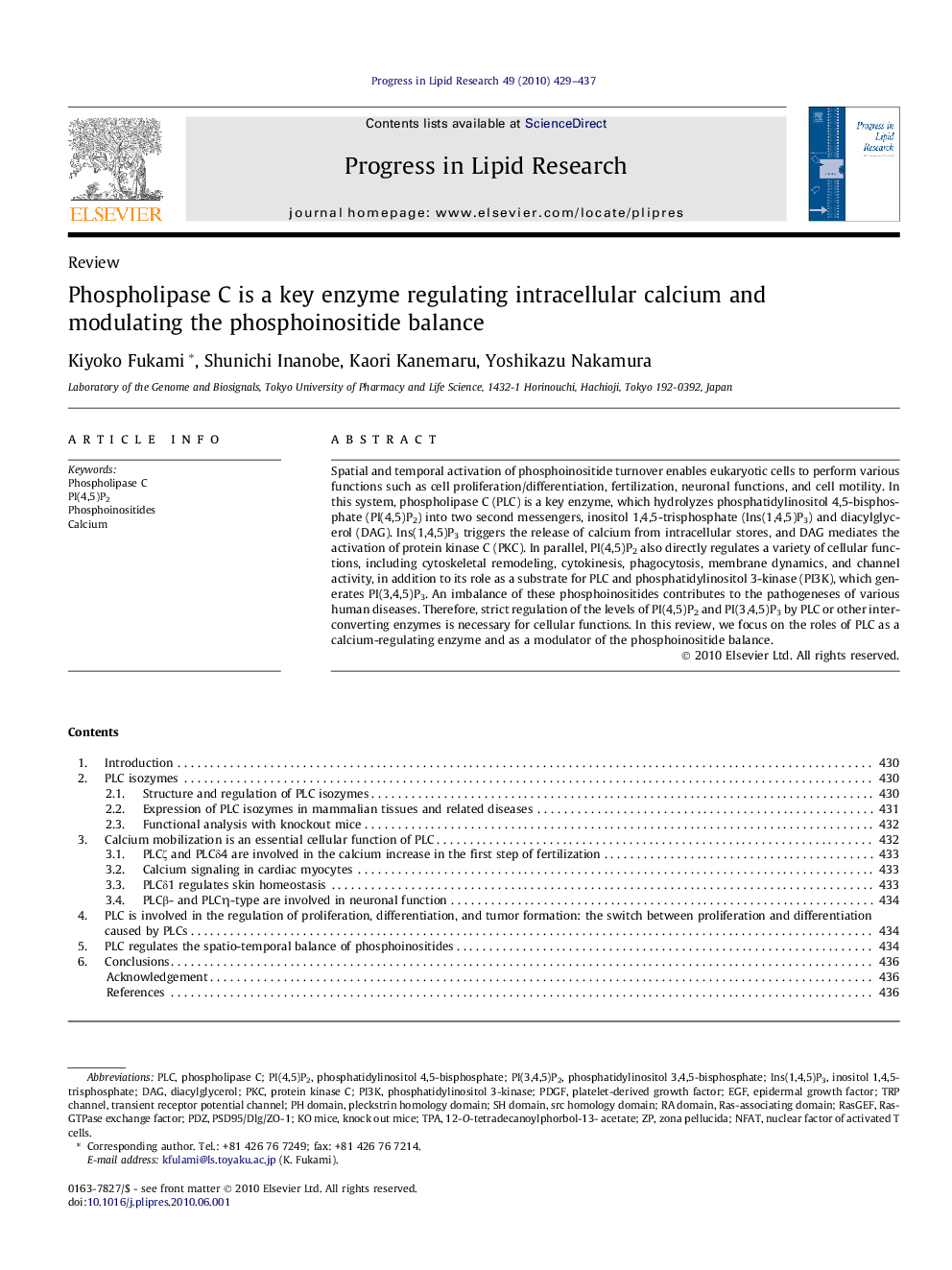| Article ID | Journal | Published Year | Pages | File Type |
|---|---|---|---|---|
| 2019218 | Progress in Lipid Research | 2010 | 9 Pages |
Abstract
Spatial and temporal activation of phosphoinositide turnover enables eukaryotic cells to perform various functions such as cell proliferation/differentiation, fertilization, neuronal functions, and cell motility. In this system, phospholipase C (PLC) is a key enzyme, which hydrolyzes phosphatidylinositol 4,5-bisphosphate (PI(4,5)P2) into two second messengers, inositol 1,4,5-trisphosphate (Ins(1,4,5)P3) and diacylglycerol (DAG). Ins(1,4,5)P3 triggers the release of calcium from intracellular stores, and DAG mediates the activation of protein kinase C (PKC). In parallel, PI(4,5)P2 also directly regulates a variety of cellular functions, including cytoskeletal remodeling, cytokinesis, phagocytosis, membrane dynamics, and channel activity, in addition to its role as a substrate for PLC and phosphatidylinositol 3-kinase (PI3K), which generates PI(3,4,5)P3. An imbalance of these phosphoinositides contributes to the pathogeneses of various human diseases. Therefore, strict regulation of the levels of PI(4,5)P2 and PI(3,4,5)P3 by PLC or other interconverting enzymes is necessary for cellular functions. In this review, we focus on the roles of PLC as a calcium-regulating enzyme and as a modulator of the phosphoinositide balance.
Keywords
PDGFSrc Homology domainRasGEFKO micePI3KPDZPKCPLCtPAEGFNFATinositol 1,4,5-trisphosphateIns(1,4,5)P3PI(4,5)P2Knock out micePH domainPleckstrin homology domaindiacylglycerolDAGepidermal growth factorNuclear Factor of Activated T Cellsplatelet-derived growth factorPhosphatidylinositol 3-kinasephosphatidylinositol 4,5-bisphosphatePhosphoinositidesphospholipase CZona pellucidaProtein kinase CTRP channelTransient receptor potential channelCalcium
Related Topics
Life Sciences
Agricultural and Biological Sciences
Food Science
Authors
Kiyoko Fukami, Shunichi Inanobe, Kaori Kanemaru, Yoshikazu Nakamura,
